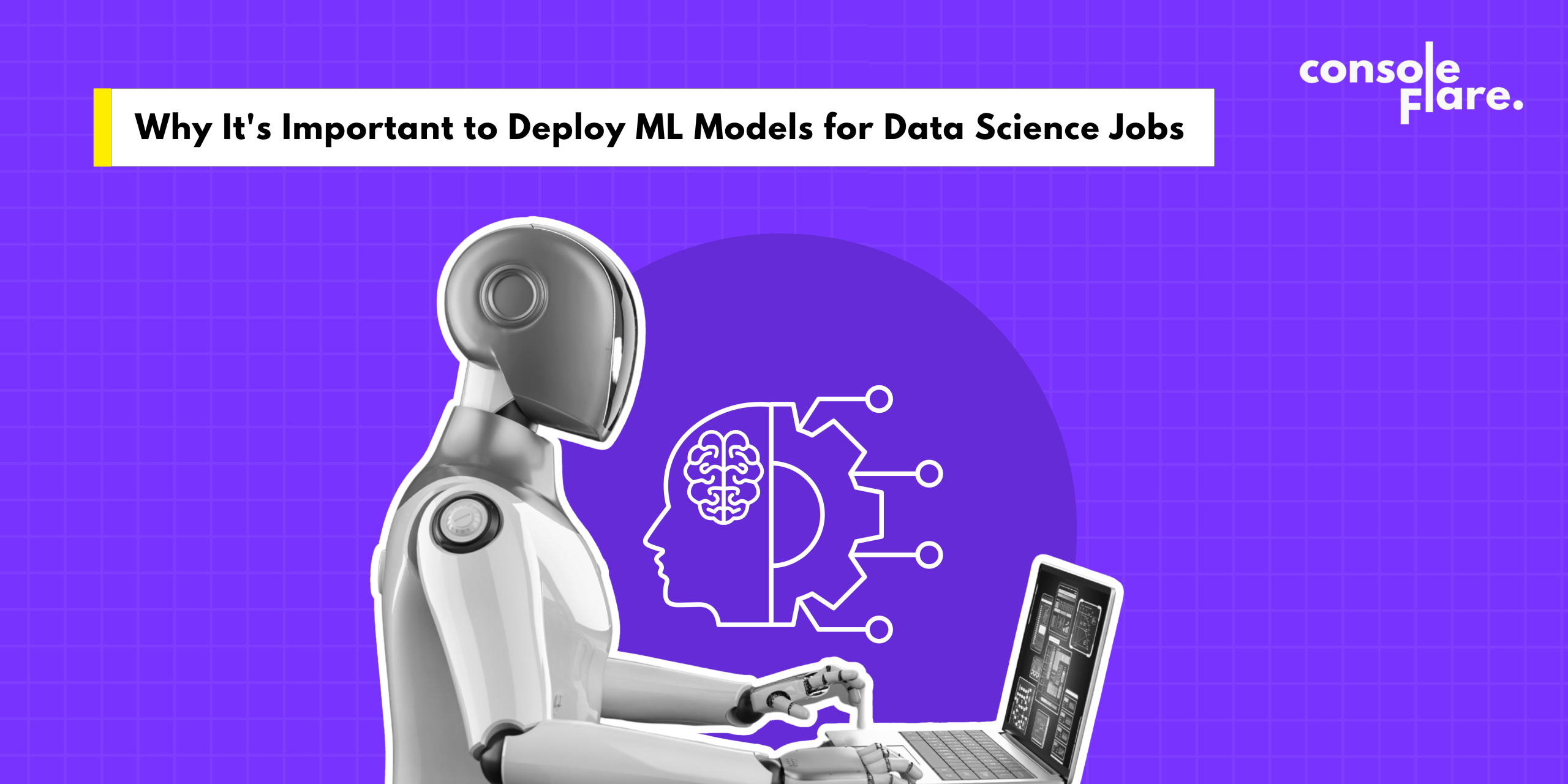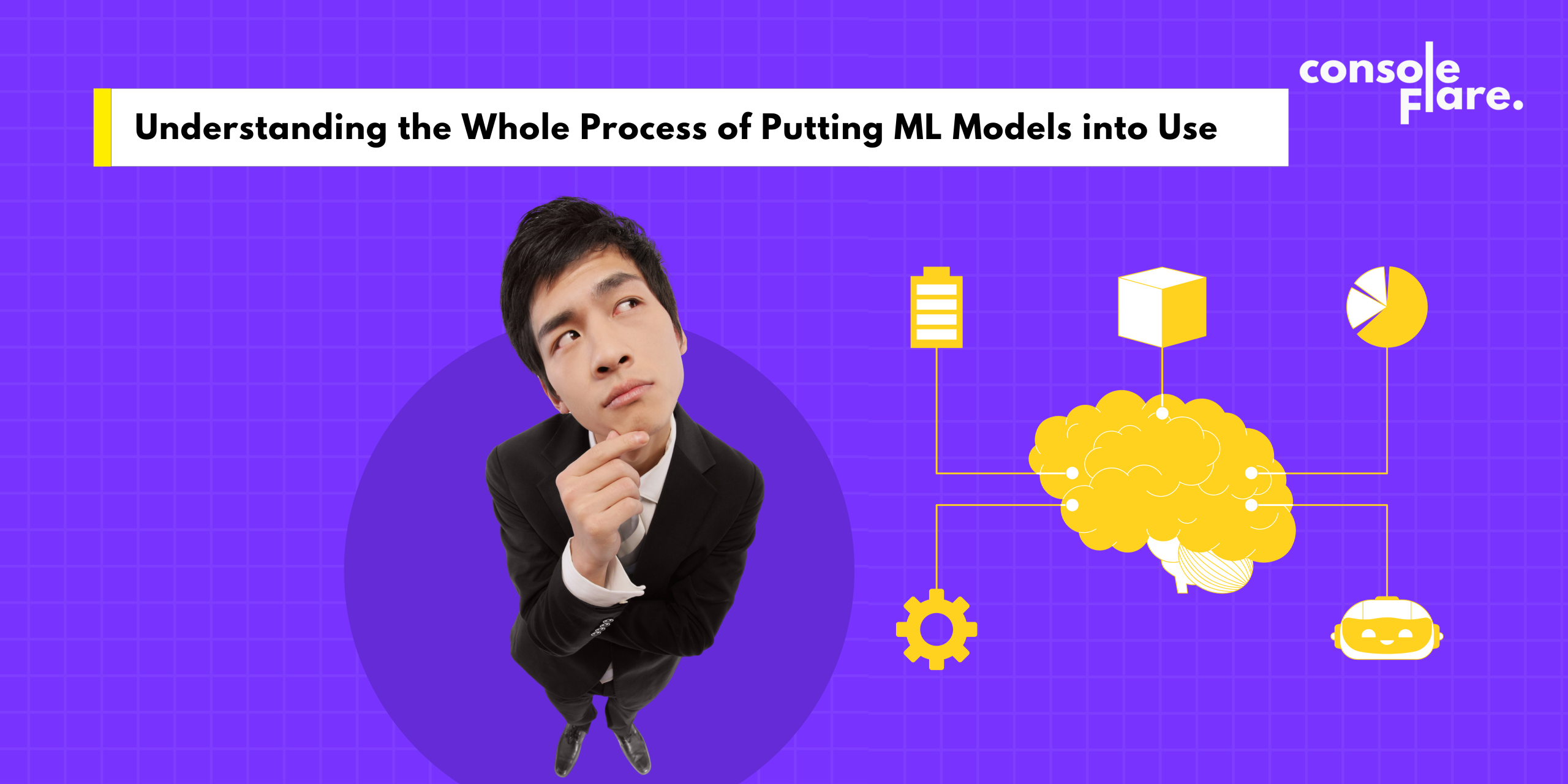Deploying ML Models from Console Flare Courses to Production Environments
Deploying ML models is the step that turns Machine Learning from theory into real impact. A model running only inside a Jupyter Notebook is useful for learning; however, a deployed model helps companies make accurate decisions, reduce errors, and improve performance. At Console Flare, we focus on teaching this full journey in a simple and practical way so that beginners, students, working professionals, and career changers understand exactly how ML models reach production.
Why It’s Important to Deploy ML Models for Data Science Jobs

Data is essential to a company’s everyday operations. Predictions are also required for pricing decisions, risk analysis, product demand, fraud detection, customer behavior, and many other areas. Prior to deployment, a trained model produces no tangible value.
- Once you know how to deploy machine learning models, you
- Become prepared for contemporary Data Science positions.
- Learn how machine learning helps with actual business decisions.
- Find out how predictions get to automation tools, dashboards, or apps.
- Gain the self-assurance to work on actual projects rather than just practicing with datasets.
Deployment prepares you for real-world work settings and helps you go beyond classroom learning.
How Console Flare Makes Deploying ML Models Easy for Beginners

Learners join Console Flare from different backgrounds, like commerce, science, humanities, business, finance, HR, sales, or support roles. Many do not have coding experience at the beginning. This is why the training structure explains every concept step by step.
Fundamentals like Python, Pandas, SQL, and Power BI are where you start. Once your foundation is solid, you proceed to machine learning, model construction, assessment, and, at the end, the deployment of ML models through cloud platforms, Docker containers, and APIs. Even a total beginner can easily understand the deployment process thanks to the straightforward, understandable, and useful learning style.
With lifetime access, you can repeat sessions whenever you want and learn in an easy-to-follow order.
For new learners, you can explore our foundational guide here:
Internal link: Master’s in Data Science with Power BI
Understanding the Whole Process of Putting ML Models into Use

There are several steps to deploying ML models. Each step makes sure that the model will work correctly in real systems.
You start by using real datasets to train a model. After testing, the model that works best is chosen for production. You save the trained model, keep track of the steps you took to preprocess the data, and set up your code so it can run without your notebook.
The next step is to make an API. An API takes user input and sends it to your model, which then returns predictions. This part is easy with tools like Flask or FastAPI. You can move on to containerization once your API is working properly. Docker puts everything in a stable container, so your model will work the same way on any machine.
After your API works the way you expect, the next step is to host it somewhere it can stay active all the time. Most people use a cloud service or a simple server. Once it goes live, the model receives real inputs through a normal web link. From there, you can plug it into dashboards, websites, mobile apps, or any internal tool that needs predictions on the spot.
A Simple Way to Use ML Models
Deployment is considerably easier to follow if you break it down into smaller parts. You train your model first and then check to see whether the results appear good. You save the model and the procedures you took to prepare it once you are happy with it. After that, you develop a tiny API that lets the model get input and give predictions in real time.
Once your API is working smoothly, you bundle the whole setup into a Docker container so it runs the same way on any system. After that, you upload the container to a cloud platform, which keeps your model available whenever someone wants to use it. As it goes live, you keep an eye on its performance and update it whenever needed.
With this simple workflow, you move from trying things on your laptop to running a proper, real-world ML system.
How You Become Job-Ready with Deployment Skills

Employers look for people who understand the full machine learning workflow. If you’re only able to train a model but not put it into use, your skill set stays incomplete. Companies prefer candidates who can build a model, deploy it, test it, and keep it running properly.
When you learn how to deploy ML models, you become a strong fit for roles like Data Scientist, Machine Learning Engineer, BI Specialist, or AI Developer. These jobs often require you to work with cloud platforms, APIs, automation tools, and version control systems. Deployment experience helps you adjust to these tasks with much more ease.
To learn more about careers in this domain, check this internal resource:
Internal link: consoleflare.com
How Actual Projects Help People Understand Deployment
During Console Flare’s training, you work with real datasets and practical business problems. These projects help you see how areas like supply chain, retail, healthcare, technology, and finance use machine learning in everyday operations. As you move through real examples, it becomes easier to understand where deployment fits into the overall process.
You learn about the advantages of forecasting:
- Enhance the customer experience
Promote risk reduction.
Process simplification will allow for more intelligent marketing.
Determine the demand and sales.
These real-world examples make the deployment process easy to follow because each step is connected to a specific business outcome.
ML model implementation is not as hard as it may seem
Many learners feel unsure before starting deployment, and that’s completely normal. Once the steps are explained clearly, things start making sense very quickly. When you look at the steps one by one, things like cloud deployment, setting up Docker, and creating an API start feeling much easier. Once you get a basic idea of how each piece fits together, the whole deployment process becomes manageable, and you begin to feel confident doing it on your own.
Console Flare focuses on explaining everything in a clear and easy manner. You can revisit the lessons, ask questions during live classes, and practice each step as many times as you need. With this kind of support, you get comfortable with real ML pipelines faster than you expect.
Final Thought
If you want to grow in the field of data science, learning how to put machine learning models into actual use is important. It completes your training and prepares you to work on real projects. Console Flare’s simple and easy teaching style makes the idea of deployment clear for learners at every level.
A strong career in data science requires you to work with real data and real systems, not just theory. Once you start applying models in practical situations, your confidence increases and you begin to understand how companies use ML in everyday decisions.
Conclusion:
To join this workshop, register yourself on ConsoleFlare, and we will call you back.
Thinking, Why Console Flare?
Recently, ConsoleFlare has been recognized as one of the Top 10 Most Promising Data Science Training Institutes of 2023.
Console Flare offers the opportunity to learn Data Science in Hindi, just like how you speak daily.
Console Flare believes in the idea of “What to learn and what not to learn,” and this can be seen in their curriculum structure. They have designed their program based on what you need to learn for data science and nothing else.
Want more reasons?
Register yourself on ConsoleFlare, and we will call you back.
Log in or sign up to view
See posts, photos, and more on Facebook.




